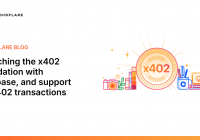Citigroup's Strategic Foray into Crypto: A Catalyst for Institutional Adoption and Financial Infrastructure Innovation
- Citigroup pioneers crypto services via blockchain, strategic partnerships, and regulatory alignment, redefining institutional finance infrastructure. - Three pillars: secure custody, blockchain payments, and institutional platforms address growing demand for digital assets among clients. - Stablecoin custody, cross-border blockchain solutions with Payoneer, and compliance initiatives like Singapore's Project Guardian build institutional trust. - Infrastructure investments create network effects, enabling
Citigroup's recent foray into cryptocurrency services marks a pivotal moment in the evolution of digital finance. By leveraging blockchain technology, forming strategic partnerships, and aligning with regulatory advancements, the bank is not merely adapting to a new asset class—it is redefining the infrastructure that will underpin the next era of institutional finance. For investors, this represents a compelling long-term opportunity to capitalize on the convergence of traditional banking and crypto-enabling systems.
The Strategic Pillars of Citigroup's Crypto Expansion
Citigroup's approach to cryptocurrency is rooted in three core pillars: secure custody solutions, blockchain-driven payment systems, and institutional-grade digital asset platforms. These initiatives are not speculative bets but calculated moves to address the growing demand for digital assets among institutional clients.
Stablecoin Custody and Issuance
Citigroup is exploring custody services for stablecoins and the assets backing crypto ETFs, such as BlackRock's iShares Bitcoin Trust. This aligns with the U.S. GENIUS Act, which provides a legal framework for stablecoin operations. By offering custody for high-quality collateral, Citigroup is positioning itself as a trusted intermediary in a market projected to grow to $1.5 trillion by 2030. The bank's potential issuance of its own stablecoin could further cement its role in facilitating 24/7 cross-border transactions, reducing reliance on legacy systems.Blockchain Partnerships and Infrastructure
Collaborations with fintechs like Payoneer and Anchorage Digital highlight Citigroup's focus on scalable, secure solutions. The Citi Integrated Digital Assets Platform (CIDAP) is a blockchain-enabled ecosystem designed to tokenize private markets, streamline custody, and enable real-time treasury management. These tools are critical for institutional clients seeking to tokenize assets or execute trades on-chain, a market segment expected to expand as regulatory clarity improves.Regulatory Alignment and Institutional Trust
Citigroup's engagement with regulatory bodies and industry groups—such as its participation in Singapore's Project Guardian—demonstrates its commitment to shaping a compliant digital asset landscape. This proactive stance reduces the risk of regulatory overhang, a key barrier for institutional adoption. By aligning with frameworks like the GENIUS Act, Citigroup is building a bridge between traditional finance and crypto, attracting risk-averse investors and corporations.
The Investment Case: Why Citigroup's Move Matters
Citigroup's entry into crypto is not an isolated event but a harbinger of broader institutional adoption. The bank's infrastructure investments are creating a network effect that benefits the entire ecosystem. For example, its Citi Token Services (CTS) platform, operational in New York, London, and Hong Kong, enables real-time liquidity management using tokenized fiat. This infrastructure reduces friction in global markets, making it easier for corporations and asset managers to integrate crypto into their portfolios.
The data tells a compelling story. Over the past year, Citigroup's stock has outperformed the S&P 500 Financials Index, driven by investor optimism around its digital transformation. Meanwhile, the rise of crypto ETFs—such as the $90 billion BlackRock iShares Bitcoin Trust—has created a demand for custodial services that Citigroup is uniquely positioned to fulfill.
Long-Term Opportunities in Crypto-Enabling Infrastructure
For investors, the key takeaway is that Citigroup's success in crypto is not tied to Bitcoin's price but to the infrastructure layer it is building. This includes:
- Tokenization of private markets: By partnering with Wellington Management and WisdomTree , Citigroup is unlocking liquidity in illiquid assets, a $15 trillion market opportunity.
- Cross-border payment efficiency: Its blockchain-based solutions with Payoneer could capture market share from traditional SWIFT systems, which charge high fees for slow transactions.
- Digital custody and settlement: As institutional demand for crypto grows, Citigroup's secure custody services could become a recurring revenue stream.
Risk Mitigation and Strategic Positioning
Critics may argue that crypto remains a volatile and unproven asset class. However, Citigroup's approach mitigates these risks by focusing on stablecoins, tokenized fiat, and institutional-grade custody, which are less speculative than Bitcoin or Ethereum . Additionally, its partnerships with regulated entities like Anchorage Digital and PwC ensure compliance with anti-money laundering (AML) and cybersecurity standards.
Conclusion: A Buy for the Long-Term Investor
Citigroup's strategic entry into crypto is a masterclass in institutional adoption. By building the infrastructure that enables corporations, asset managers, and governments to interact with digital assets, the bank is positioning itself as a linchpin in the future of finance. For investors, this represents a long-term opportunity to benefit from the secular shift toward tokenization and blockchain-based systems.
Investment Advice: Consider a buy-and-hold position in Citigroup (C), with a focus on its digital asset revenue streams. Additionally, investors seeking exposure to the broader crypto-enabling infrastructure sector may explore ETFs like the ARK Innovation ETF (ARKK) or Fidelity's Wise Origin Bitcoin ETF (BITO). Patience is key—this is not a short-term trade but a bet on the next decade of financial innovation.
In the end, Citigroup's move is not just about crypto—it's about redefining the rules of finance in a digital age. And for those who recognize the shift early, the rewards could be substantial.
Disclaimer: The content of this article solely reflects the author's opinion and does not represent the platform in any capacity. This article is not intended to serve as a reference for making investment decisions.
You may also like
Crypto markets tumble amid US regional bank stress, prolonged government shutdown

EIGEN Large Unlock Incoming: 10% Market Cap Dilution Each Month, Smart Money Exits Early
The article, based on on-chain data analysis, points out that the recent sharp decline of the $EIGEN token (a 53% plunge on October 10) is not merely a result of market panic, but rather a manifestation of a deeper underlying issue. The real core risk lies in the massive and continuous token unlocks over the next two years, which will exert tremendous selling pressure. The smartest and most profitable traders had already anticipated this and systematically exited their positions weeks before the market crash.

How does market microstructure determine the real movement of candlestick charts?

Which crypto and AI projects will take the lead in the x402 payment protocol?
